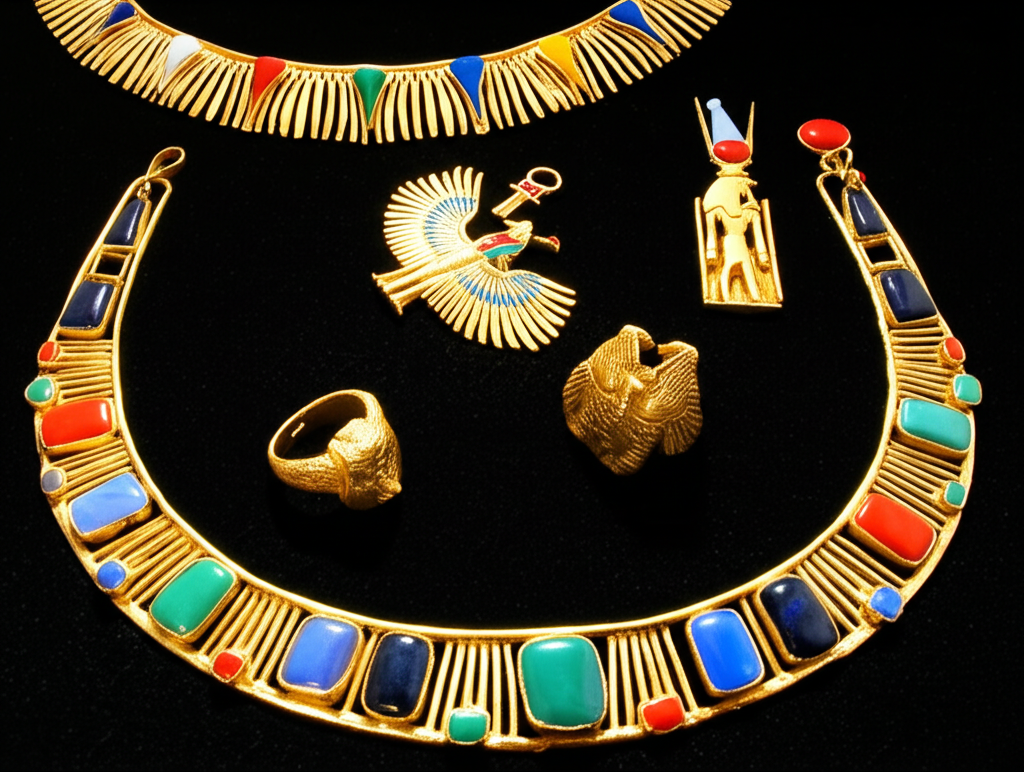The History of Jewelry
Explore how jewelry has evolved throughout human history, from prehistoric adornments to modern masterpieces.

Ancient Jewelry (7000 BCE - 500 CE)
The earliest jewelry was created from natural materials like bone, animal teeth, shell, wood, and carved stone. As metalworking technologies developed, gold became the primary material for jewelry among those who could afford it. Ancient Egyptian, Greek, and Roman civilizations all developed distinctive jewelry styles.
Key Characteristics:
- Use of gold as the primary precious metal
- Religious and protective symbols
- Gemstones valued for magical properties rather than brilliance
- Techniques included granulation, filigree, and repoussé
Notable Examples:
- Egyptian pectoral necklaces featuring scarab beetles
- Greek gold wreaths and diadems
- Etruscan granulation work
- Roman cameos and intaglios
Jewelry Timeline
7000 BCE
First copper jewelry appears in the Middle East
5000 BCE
Gold jewelry first created in ancient Mesopotamia and Egypt
2000 BCE
Development of granulation technique in Mesopotamia
1200 BCE
Lost-wax casting technique refined in ancient Greece
500 BCE
Etruscan goldsmiths perfect granulation techniques
100 CE
Romans popularize the use of colored gemstones in jewelry
1200 CE
European guilds establish standards for goldsmithing
1477 CE
Archduke Maximilian gives Mary of Burgundy the first diamond engagement ring
1700s
Development of the brilliant cut diamond increases sparkle and brilliance
1837
Tiffany & Co. founded, later becoming an iconic jewelry brand
1895
Art Nouveau movement brings organic forms to jewelry design
1920s
Art Deco style introduces geometric patterns and bright colors
1948
De Beers launches the 'A Diamond is Forever' campaign
2000s
Computer-aided design and 3D printing revolutionize jewelry manufacturing